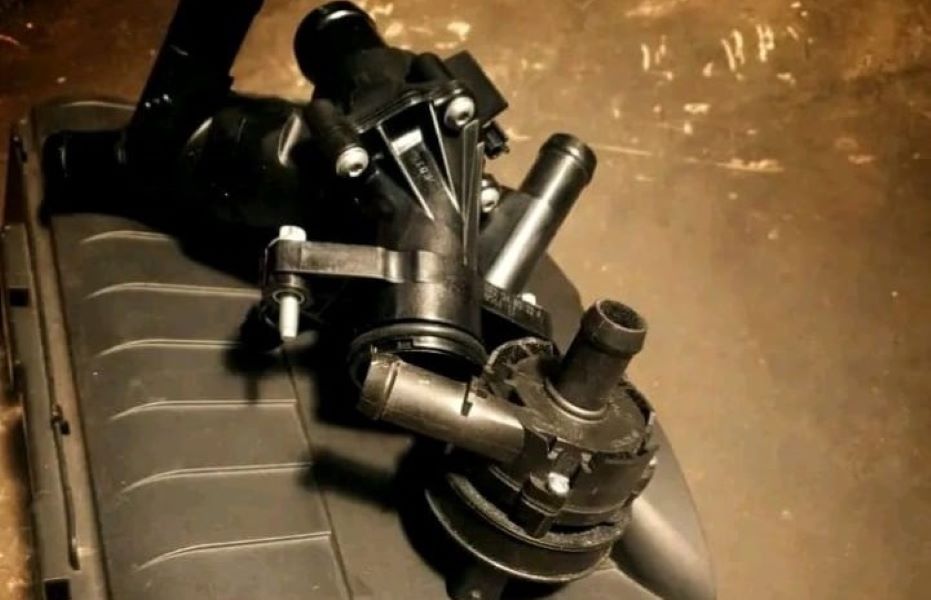Table of Contents
Is It Normal for Coolant Level to Drop? A Case Study in Mercedes-Benz GLA 200 X156
If you’ve ever asked yourself, “Is it normal for coolant level to drop?”, you’re not alone. Coolant, also known as antifreeze, plays a vital role in regulating engine temperature and preventing overheating. While minor fluctuations can occur naturally, a consistent or steady drop in coolant levels usually indicates a problem that needs attention.
In this case study, we’ll look at a Mercedes-Benz GLA 200 X156 equipped with the M270 Engine, where the driver noticed a gradual coolant loss that eventually triggered the Coolant Level Low warning. We’ll walk through the diagnostic process, the root causes found, and the solutions applied, followed by a deeper look at common reasons coolant levels drop in vehicles.

Symptoms, Causes, and Fixes
| Symptoms | Possible Causes | Recommended Fix |
|---|---|---|
| Gradual coolant level drop | External leak (thermostat housing, hoses, pump) | Pressure test system and replace leaking component |
| Coolant warning light on dashboard | Auxiliary coolant pump failure | Replace faulty pump |
| White smoke from exhaust | Head gasket failure, coolant entering cylinders | Replace head gasket, inspect head/block |
| Sweet smell inside cabin | Heater core leak | Replace heater core |
| Steam or boiling coolant | Faulty radiator cap, overheating | Replace cap, check fan and thermostat |
Customer Complaint
The owner of a Mercedes-Benz GLA 200 X156 reported:
- – Coolant level steadily decreasing.
- – Dashboard warning: Coolant Level Low.
- – No immediate overheating, but clear signs of a leak.
This raised the question: Is it normal for coolant levels to drop?
Step 1: Pressure Testing the Coolant System
The first step was a coolant system pressure test. By simulating system pressure, even small leaks can be identified.
Cause: The housing material degraded over time due to heat cycles, allowing coolant to escape.
Result: Coolant leak detected at the thermostat housing.



Step 2: Diagnosing Auxiliary Coolant Pump
Next, the technician performed an electronic diagnostic scan.
- – Fault code found: Auxiliary coolant pump malfunction.
- – Wiring and fuses inspected: no issues.
- – Actuation test confirmed: pump failed, no operation.
This pump is crucial because it circulates coolant even when the engine is off or running at low loads. A failure here can cause coolant stagnation and eventual overheating.

Step 3: Replacing Faulty Components
To restore full system functionality:
- Thermostat housing replaced → stopped visible leak.
- Auxiliary coolant pump replaced → restored circulation.
- System refilled and bled → removed air pockets.
- Follow-up pressure test → confirmed system sealed.
Outcome: Coolant levels remained stable. Warning light cleared. Vehicle back to normal.

Why Does Coolant Level Drop?
A coolant drop is not always normal. Here are the most common reasons:
1. External Leaks
- – Hoses → cracked or brittle hoses leak under pressure.
- – Radiator → corrosion or physical damage causes leaks.
- – Thermostat housing → plastic housings degrade over time.
- – Water pump → worn seals or bearings cause leaks.
2. Internal Leaks
- – Blown head gasket → coolant enters combustion chamber, seen as white smoke.
- – Cracked engine block or cylinder head → coolant mixes with oil or burns off.
3. Evaporation
- – In hot climates, minor evaporation can occur.
- – But significant drops are not normal.
4. Faulty Radiator Cap
- – Weak cap loses pressure, allowing coolant to escape as steam.
5. Heater Core Issues
- – Leaking heater core may cause wet carpets or a sweet odor inside the cabin.
6. Auxiliary Coolant Pump Failure
- – Reduces circulation, creating hot spots that cause leaks.
7. Coolant Boiling Over
- – Caused by overheating or stuck thermostat.
Preventative Maintenance Tips
- – Check coolant monthly → top up with genuine Mercedes-approved coolant.
- – Inspect hoses and housing → replace at first signs of cracking or leaks.
- – Replace auxiliary pumps proactively → especially if DTCs are logged.
- – Monitor for odors or steam → signs of hidden heater core leaks.
- – Service cooling system every 2 years for long-term reliability.
Conclusion
So, is it normal for coolant level to drop?
- – Minor fluctuations from evaporation are normal.
- – Steady drops mean a problem.
In this Mercedes-Benz GLA 200 X156, the issue was traced to:
- – A leaking thermostat housing.
- – A failed auxiliary coolant pump.
Both components were replaced, restoring the system and preventing engine overheating.
Key Takeaway: Never ignore a gradual coolant loss. Early diagnostics and repairs save you from catastrophic engine damage.
More Mercedes Cooling System Resources
Want to explore more causes, symptoms, and repair tips for coolant leaks, overheating, and contamination?
Learn more about Mercedes cooling system faults in our full Cooling System Guide.
FAQs
Q1: Is a small coolant drop normal?
Yes, slight fluctuations can happen, but consistent drops are abnormal.
Q2: What’s the most common cause of coolant loss in Mercedes?
Leaking thermostat housings and worn water pumps are common culprits.
Q3: Can coolant evaporate naturally?
Yes, but only in very small amounts. Large losses indicate leaks.
Q4: What happens if I ignore low coolant warnings?
Ignoring warnings can lead to overheating, blown head gaskets, and engine failure.
Q5: How much does it cost to fix coolant leaks in Mercedes GLA?
Depending on the component, repairs may cost $400–$1,200.
Author
Written by: Mercedes Expert
Automotive Technical Trainer & Mercedes-Benz Diagnostic Specialist
With years of hands-on experience repairing and diagnosing Mercedes-Benz vehicles, specializes in case-study-based troubleshooting guides that blend workshop accuracy with educational clarity.
Last Updated: August 2025






Leave a Reply